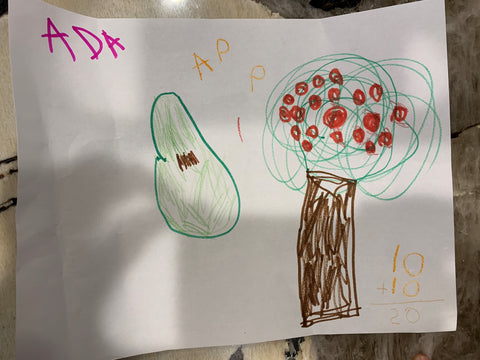Your Cart is Empty
- 32450712666178
- 32450713026626
- 32450715680834

Last month I posted about the struggles and challenges of teaching writing to students with complex needs. If you didn’t read it, catch it here. This month, I’m boiling it down to three simple things to remember when you engage your students in writing practice and instruction. Ready?
What is one thing you need when you are learning something new? It’s time; time being supported by a more knowledgeable other and time for independent practice. Learning to write, under the best of circumstances takes time. If we don’t prioritize writing every day, we won’t help our students develop their skills. But what about the day that ends early due to snow? Or the one where you have an assembly or...(fill in the blank)? Didn’t get to it today, put it at the top of tomorrow’s priority list. Daily writing blocks can make the difference so create one today!
Let’s pretend student makes a scribble on the paper or stamps a letter, do your best to attribute meaning. That’s right. Verbally acknowledge what they have tried to communicate. But, don’t stop there. Ask them, “Can you write more?” Here’s where your persistence may pay off! Let the writing activity stretch out over several days or longer if needed. Each day give your student a nudge and tell them you can’t wait to see what they write today!

The example in the picture highlights how you can attribute meaning and coax students to write more. While my daughter Ada is typically developing, she is a beginning-conventional writer. Ada drew a picture of an apple tree and pear. She wrote A-P-P on the page. I attributed meaning by saying, “I noticed you wrote something next to the tree. Did you write apple? Can you write more about your drawing?” She picked up a different crayon and added an L. Later that day, she revisited her drawing, counted the apples, and wrote 10+10=20 on the bottom of the page. I asked her, “What does this mean?” She said, “There are 20 apples on the tree.” Instead of writing a sentence she was able to represent this thought differently.
Providing a visual referent, such as a photograph or drawing, is important at these beginning stages of writing. Without the drawing, I wouldn’t have known that A-P-P meant apple. If this were a student in your classroom, you could bring out a fresh sheet of paper the next day and ask something like, “What happened to the apples next?” or “Let’s add to this story.” You can see how a simple drawing can lead to a few words and eventually a story!
Just as when typically developing toddlers are learning to speak, they must first engage in babbling or baby talk. We don’t correct them. On the contrary, we treat them like conversational partners and build on what we think they are attempting to say. The same goes for beginning writers of any age—think of the strings of letters (that may not make conventional sense) as babbling—which is a great start. Acknowledge the effort that went into it and celebrate whatever you can, even if it’s a brief moment of focus or participation.
While teaching students to write is a giant task, if we take it day-by-day, over time we will see progress, and we will help our students learn how to use it as a means for communication. And that’s pretty amazing! We’d love to hear from you. What writing tips make your writing block successful or productive?


